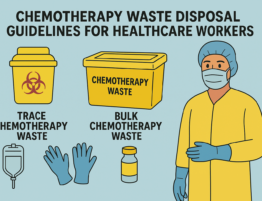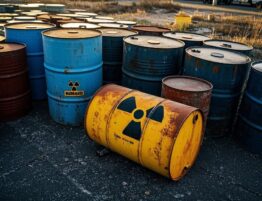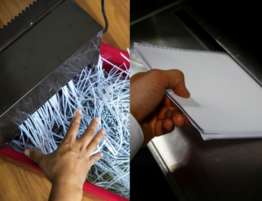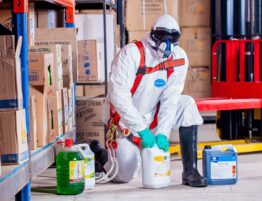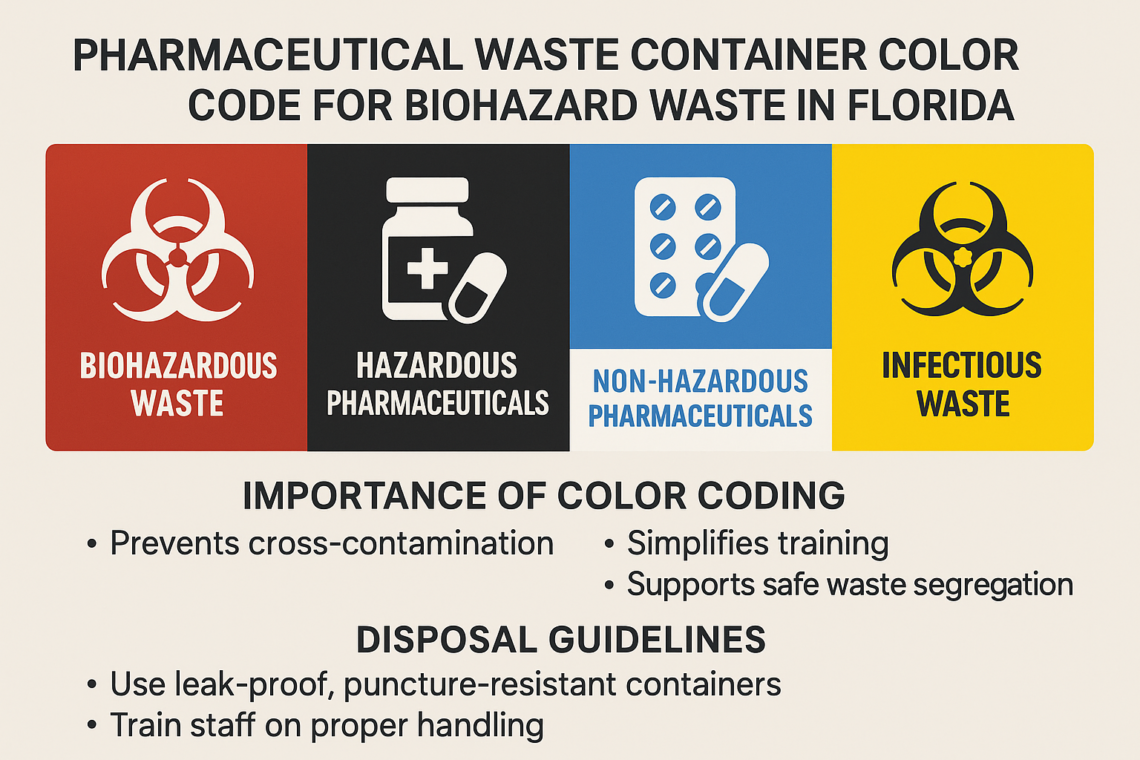
Pharmaceutical Waste Container Color Code for Biohazard Waste in Florida
Proper disposal of medical and pharmaceutical waste is essential for safety and environmental protection. In Florida, understanding the pharmaceutical waste container color code for biohazard waste is crucial for healthcare workers, pharmacists, and laboratory staff. This guide explains the color codes used for various types of waste and highlights how facilities should handle pharmaceutical and biohazardous materials based on Florida regulations.
Why Color Coding Matters in Healthcare Waste Disposal
Color coding of waste containers helps prevent cross-contamination and ensures each type of waste is handled correctly. It also simplifies training for healthcare staff and supports safe waste segregation in hospitals, labs, and pharmacies. The pharmaceutical waste container color code for biohazard waste in Florida is part of broader garbage color coding in hospitals, which also includes hazardous, general, and recyclable waste streams.
Incorrect disposal of pharmaceutical waste can harm the environment, spread infection, or violate state guidelines. That’s why understanding what color containers are used to dispose of biological waste or what color container for pharmaceutical waste is not just helpful it’s legally and ethically necessary.
Color Code for Pharmaceutical and Biohazard Waste in Florida
In Florida, different colors represent specific types of biomedical waste. Here’s a breakdown of the most important color codes:
-
Red: Used for biohazardous waste, including items contaminated with blood or bodily fluids. This includes sharps containers, red bags, and other items marked with the biohazard symbol.
-
Black: Used for hazardous pharmaceutical waste, such as certain chemotherapy drugs and other toxic materials.
-
Blue or White: Sometimes used for non-hazardous pharmaceutical waste, although these colors may vary depending on the facility or manufacturer.
-
Yellow: Used for infectious waste or specific types of trace chemotherapy waste in some settings.
So, what color is the bin for medical waste? In most Florida facilities, red is the standard for regulated medical and biohazardous waste, while black is designated for hazardous drugs.
What Color Indicates Universal Pharmaceutical Waste?
The term universal pharmaceutical waste refers to waste medications that are not classified as hazardous. While there’s no federal requirement for a specific bin color, Florida facilities often use blue or white containers for this purpose to differentiate from black bins used for hazardous materials. When asking, what color container for pharmaceutical waste?, always check your facility’s specific policy, as implementation can differ.
For those searching for a free pharmaceutical waste container color code for biohazard waste in Florida, downloadable charts and posters are often available from state health departments or medical waste disposal companies.
Biomedical Waste Hospital Waste Color Coding
Understanding biomedical waste hospital waste color coding is key to safe handling and disposal. The Florida Department of Health regulates biomedical waste through strict guidelines:
-
Red bags and red sharps containers for biohazardous waste
-
Black containers for hazardous drugs
-
Yellow bags for isolation or infectious waste (optional use)
-
Blue or white containers for unused, non-hazardous pharmaceuticals
This system supports safe separation of waste and aligns with the color coding of waste disposal in the laboratory and other healthcare settings.
Biohazard Waste Disposal Guidelines in Florida
Facilities must follow clear biohazard waste disposal guidelines in Florida. Red containers and bags marked with the universal biohazard symbol must be used. These containers must be leak-proof, puncture-resistant, and closable. All employees must be trained in handling them correctly.
Also, the storage period for full sharps containers and full non-sharp red bags may not exceed 30 days. After that, the waste must be collected by a licensed biomedical waste transporter or treated on-site using approved methods.
What Is the Biomedical Waste Code in Florida?
The biomedical waste code in Florida is governed under Florida Administrative Code (FAC) Chapter 64E-16. This law outlines requirements for labeling, container use, storage, transport, and treatment of biomedical waste. Facilities must be registered with the Florida Department of Health and conduct annual training for employees handling these materials.
The code emphasizes color coded bins waste management to support easy identification and proper waste separation.
Hazardous Waste and Its Color Code
What is the color code for hazardous waste? In most Florida healthcare environments, black containers indicate hazardous pharmaceutical waste. This includes waste that is toxic, flammable, reactive, or corrosive. Items such as bulk chemotherapy drugs, nicotine patches, and warfarin are placed in these black containers for secure disposal.
Following hazardous waste color codes is vital to prevent environmental damage and protect workers from chemical exposure.
Color Coding of Waste Disposal in the Laboratory
In laboratory settings, color coding of waste disposal in the laboratory mirrors hospital standards. Labs often deal with mixed waste, including sharps, biological specimens, and chemical reagents. Red is used for infectious waste, black for hazardous waste, and blue or white for pharmaceuticals.
To stay compliant, labs should clearly label all bins and maintain updated color-coded posters in all workspaces.
Final Thoughts
Understanding the pharmaceutical waste container color code for biohazard waste in Florida is essential for all healthcare and laboratory personnel. It supports safe, compliant waste disposal and protects public health and the environment. Whether you’re wondering what are the color codes for waste containers? or searching for free pharmaceutical waste container color code for biohazard waste in Florida, it’s important to align with Florida’s biomedical waste code and facility-specific protocols.
Always use:
-
Red for biohazardous waste
-
Black for hazardous pharmaceuticals
-
Blue/White for non-hazardous drugs
Proper color coded bins waste management not only ensures compliance but also simplifies training and promotes safety. Stay informed, stay safe, and always double-check with local regulations when implementing waste disposal procedures.

